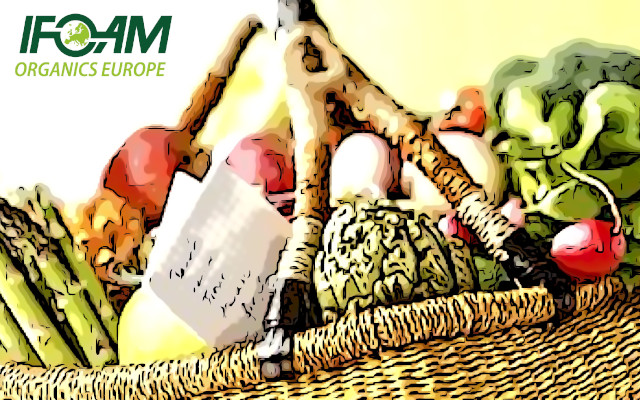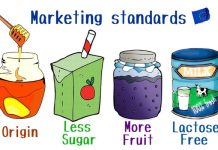The EU market for organic is now the second largest globally. After record growth in 2020, it is time for a revival. The scenario from which to start is the data published on 2/15/22 by the FiBL Organic Agriculture Research Institute, in collaboration with IFOAM.
Organic in EU, 4 countries at the top
In 2020, organic recorded record growth. The area under organic cultivation in the EU has grown to 14.9 million hectares.
More than half of these soils are concentrated in 4 countries, with France playing the role of European champion, hosting the largest organic agricultural area in the EU, 2.5 million hectares (ha). This is followed by Spain (2.4 mln ha), Italy (2.1 mln ha) and Germany.
The largest number of organic producers are active in Italy (71,590), followed by France (53,255) and Spain (44,493).
A 44.8 billion euro market
The EU organic market posted a record 15.1 percent increase to 44.8 billion euros. This is the second largest market, after the United States, followed by China.
Within EU borders, the richest market is in Germany, where it is worth 15 billion euros. It is followed by France with 12.7 billion euros and Italy with a much smaller market worth 3.9 billion euros.
The most dynamic growth in 2020 was in Germany itself (+22.3 percent), followed by Austria (+18 percent) and Ireland (+16.2 percent).
An idyllic 2020, but isolated
”The data published by FiBL/IFOAM each year are valuable, but they need to be read carefully and put into context,” observes Roberto Pinton, among Italy’s top organic experts. ‘These refer to 2020, a year that due to its exceptionality cannot really be considered “normal”: in March 2020 the pandemic exploded, with widespread lockdown, e-commerce boom, flight from hypermarkets and rediscovery of the proximity store, closure of catering and increase in meals eaten at home (all making bread and cookies), hoarding and pantry effect, reflections on the human/nature relationship (largely now returned) that heavily drugged consumption.
The 2020 trend should therefore be handled with tongs. Its (extra-ordinary) trend is not replicated in 2021 (FiBL and IFOAM will tell us next year), with consumers now weary, partly with economic hardship (compounded by the perfect storm of rising energy and consequent prices for 2022).
All food sales in France mark the pace, including organic: in 2021 -18.3% for organic and -20.2% on conventional flours, organic eggs -5.5%, conventional at -7.6%, milk -6.1% for organic and -4.7% for conventional’.
Toward 25% organic soils in 2030
In the fortunes of organic farming and toward the goal of converting 25 percent of soils in the EU to organic by 2030, a decisive role lies in public policies to support the industry and negotiations on CAP strategic plans.
In particular, FiBL recalls, three strands of policy actions are needed as highlighted in the new EU Action Plan on Organic Agriculture.
1) CAP national strategic plans.
The CAP national strategic plans provide an opportunity for EU member states to define measures to support the development of organic production. However, the European organic movement points out the inadequacy of the plans proposed so far.
2) National biological action plans
Member states can also develop national organic action plans to support organic food consumption through strong consumer promotion policies and the development of sustainable public procurement.
3) SAIO Regulations
The Regulation on Agricultural Input and Output Statistics, the SAIO proposal submitted by the European Commission, is considered crucial to improving knowledge about organic farming systems and increasing organic production and consumption. As well as to monitor the EU’s goal of reaching 25 percent of agricultural land under organic farming by 2030. A goal that currently has little credibility, as we have seen. The proposal is currently being negotiated among the colegislators.
Training and consulting
In addition to the aforementioned policies and financial support, organic development-in terms of production and demand-requires well-funded training courses and farm advisory services to increase farmers’ knowledge.
The lack of easily accessible knowledge about organic farming is in fact a brake on conversion to organic. Easy and practical tools are urgently needed.
Eyes on France
France is in the spotlight. Besides being the EU country with the largest organic area, it currently holds the EU Council presidency and will host the 2022 European Organic Congress (in Bordeaux, June 16-17, 2022).
Under these conditions, the European organic movement believes that France should set an example on organic promotion. But this does not emerge from the CAP Strategic Plan submitted to the European Commission in late December 2021.
The flaws of the French strategic plan
France’s draft CAP strategic plan is deemed unsuitable to guarantee the goal of reaching 18 percent organic farmland by 2027.
First, the organic farming maintenance scheme was withdrawn, which will no longer encourage farmers to convert to organic farming as they will not receive subsidies after the conversion scheme (a five-year contract) ends.
Second, organic farming will be remunerated according to an Eco scheme, but at the same level as the so-called High-Environmental Value (HVE) standard, despite scientific evidence and reports published in recent months showing that HVE provides far fewer environmental benefits than organic farming.
All the statistics on bio
In addition to data referring to the 27 member states of the European Union (post Brexit), FiBL publishes global and European (geographical Europe) data.
The full report The World of Organic Agriculture 2022 is available at this link.
Marta Strinati
Professional journalist since January 1995, he has worked for newspapers (Il Messaggero, Paese Sera, La Stampa) and periodicals (NumeroUno, Il Salvagente). She is the author of journalistic surveys on food, she has published the book "Reading labels to know what we eat".








